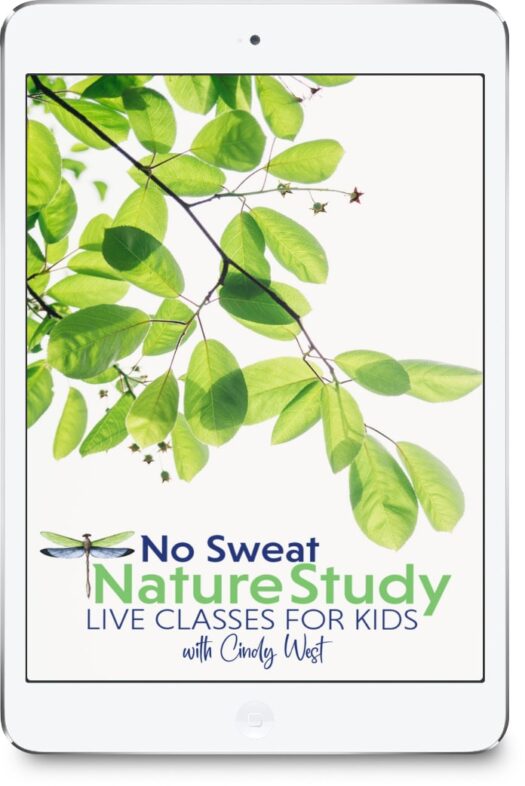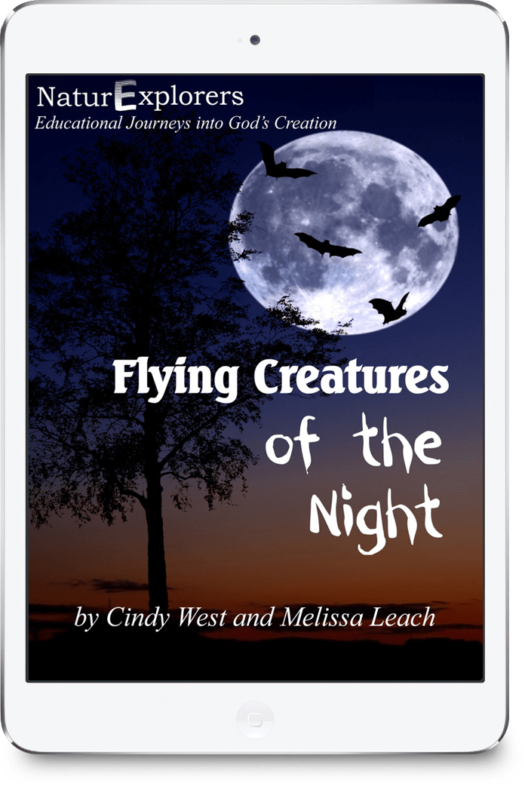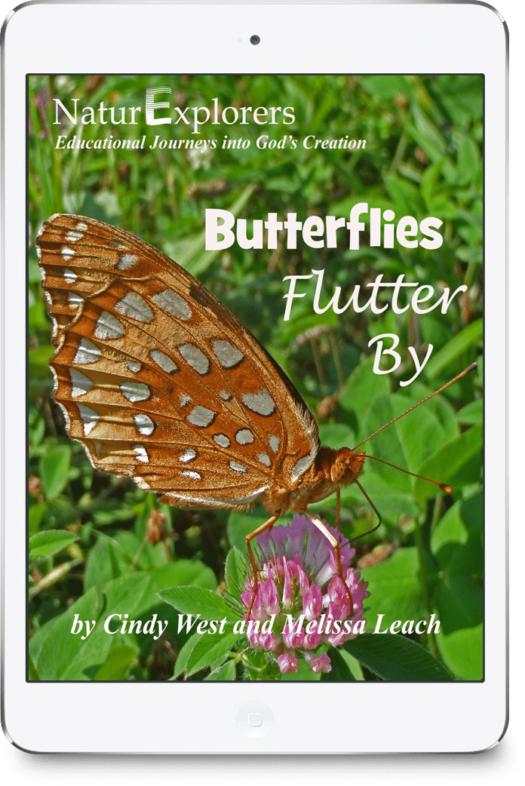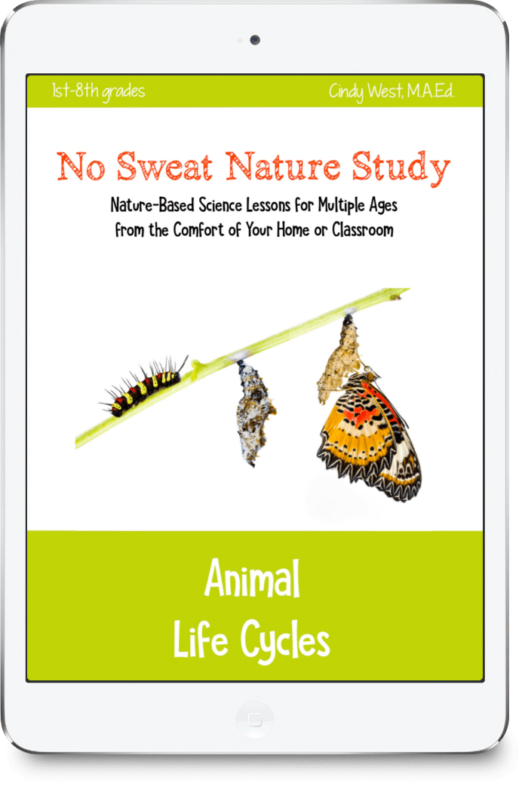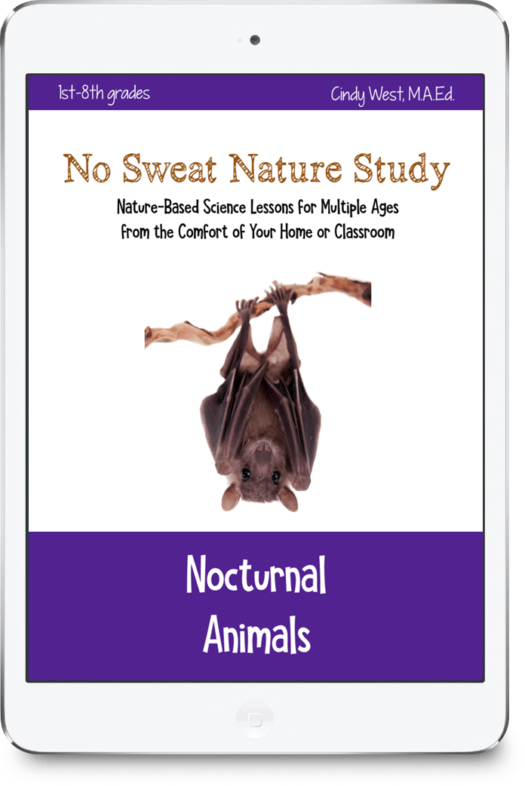Firefly Nature Study
Enjoy firefly nature study in the late spring and early summer when bioluminescence abounds at dusk!
It’s so exciting to be back with you for another season of the NSNS podcast. This summer, we’ll be learning about all sorts of fun and interesting bite-sized topics together!
Just like last season, each episode will encourage you to go on a nature walk to complete at least one fun nature journaling activity. To be prepared ahead of time, be sure to grab this season’s free downloadable packet that includes a list of weekly release dates and study topics, the suggested nature walk supplies for each episode, and even lists of correlating field guides. Reference pages to teaching sections from The Handbook of Nature Study by Anna Comstock and supporting curriculum suggestions are included, too. (Scroll to the bottom of this post to download the free Podcast Plus+ Packet.)
Members of No Sweat Nature Study LIVE have access to a special version of the Podcast Plus+ Packet that includes everything I already mentioned, plus a list of fiction and non-fiction books that go along with each of this season’s episodes!
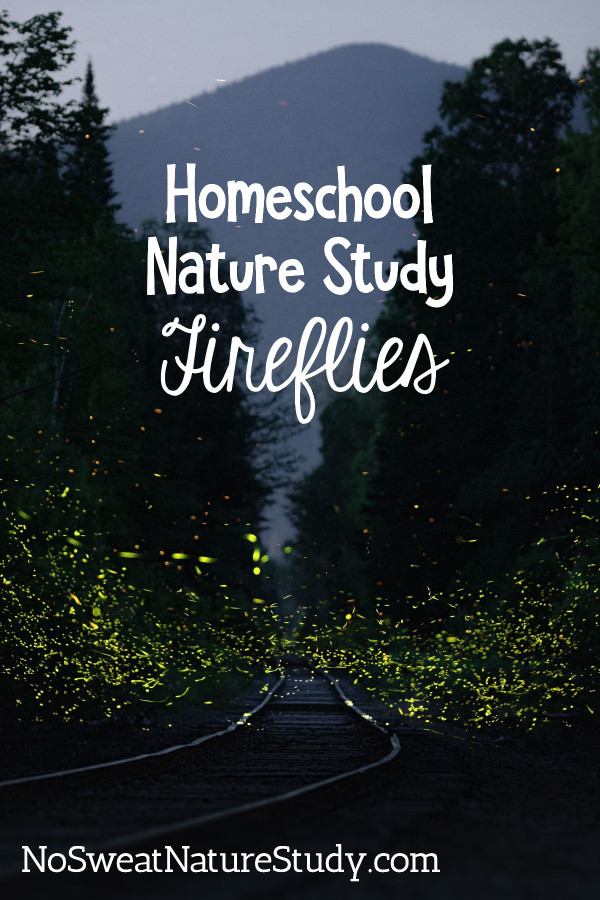
This post contains affiliate links.
What is a Firefly?
I didn’t grow up calling fireflies fireflies. Instead, my family always called them lightning bugs. Believe it or not, there are lots of other names these amazing creatures sometimes go by, too, like firebugs, firebeetles, fireworms, lantern flies, candle flies, or glowworms.
Interestingly, that group of names seems to classify the insects as either flies, beetles, or worms. Hmmm. I wonder which if any of those is correct?
You probably know that worms are not insects at all. Adult insects have three body parts – a head, thorax, and abdomen – with six legs growing from the thorax and a pair of antennae growing from the head. Insects often have wings, too. That doesn’t seem to describe what we know of as a worm at all does it?
I have a strong feeling the term worm is sometimes used because many insects, including fireflies, resemble worms when they are in the larva stage of their life cycle.
Insect Complete Metamorphosis
Let’s chat about the larvae stage of an insect just in case you don’t know about it. We don’t have time in this episode to talk about everything having to do with the life cycle of insects, so I’ll keep it brief.
As insects grow, they go through some distinct changes. Fireflies are part of a group of insects that go through four changes – called a complete metamorphosis.
In stage one of the complete metamorphosis, an insect begins life in an egg. Upon hatching from the egg, it enters stage two and in known as a larva. A larva often looks like a worm or caterpillar. Stage three is the pupa stage when the wormlike larva builds a protective casing around itself in order to change into an adult. The pupa casing is usually called a chrysalis or cocoon. Stage four of the life cycle occurs when an adult insect emerges from the pupa casing, rarely looking anything like it did as a larva!
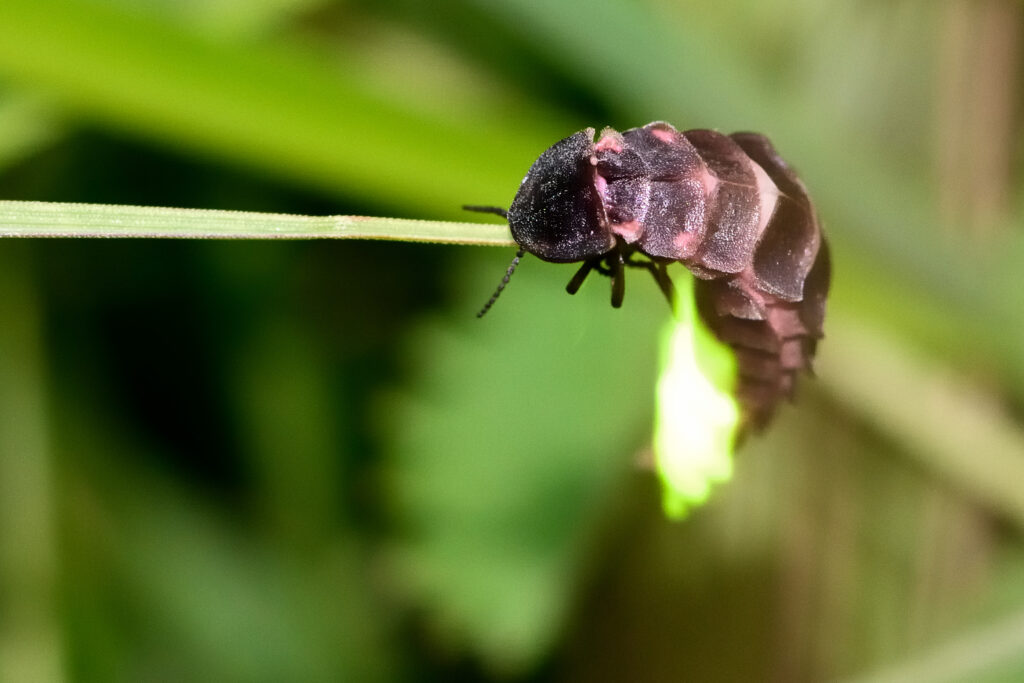
Firefly Larvae
You might be surprised to know that fireflies can often glow even in the larva stage. Firefly larva live in the soil. Can you imagine digging through the soil only to find something glowing in there?
Firefly larvae spend the night hours hunting critters that live in the soil like slugs or worms. This makes firefly larvae carnivores and nocturnal. Carnivores are animals that eat meat and nocturnal animals are the ones that are active at night.
Are Fireflies Flies or Beetles?
OK, back to the original question. If we know fireflies aren’t worms, what are they? Flies or beetles or something else? Flies and beetles are both are insects and fireflies are definitely one or the other. Can you guess which one is correct?
They are beetles!
Likely, they’ve been nicknamed flies because they fly around during the adult stage of their life cycle. But, what make them a beetle is a unique set of wings. They actually have two pairs, one set for flying which is covered by another set of hard forewings called elytra. The stiff and sturdy elytra protect the flying wings.
You may have noticed these hard forewings on ladybugs before. Ladybugs are also beetles!

Lampyrid Family
If you know anything about the way scientists work, you’ve probably already guessed that all of the fun names we’ve heard for fireflies thus far are just nicknames. There is an official name that’s much more scientific. Fireflies are lampyrids.
Lampyrids seems like a fancy family name, but maybe it’s not too fancy. Do you hear the word “lamp” in there? I bet you can guess where that came from! Yes, the lamp-like glowing that fireflies can do!
Firefly Nature Study Challenge
Grab your nature journal and some colored pencils or markers. A trowel would be helpful, too. If you have a glass jar, ask permission to take that outside with you, too.
I’m going to give you a daytime nature walk option and a dusk nature walk option for your firefly nature study.

Daytime Firefly Nature Study Challenge
Fireflies spend up to two years of their life as larvae living in the soil and only about two weeks as adults that fly around. Even though firefly larvae are nocturnal, you may be able to find some when you dig around in the soil with your hand or a trowel.
You’re searching for roly-poly looking critters that seem to be covered in layers of brown armor. They are usually about ¾” long. If you do find firefly larvae, sketch what you see in your nature journal.
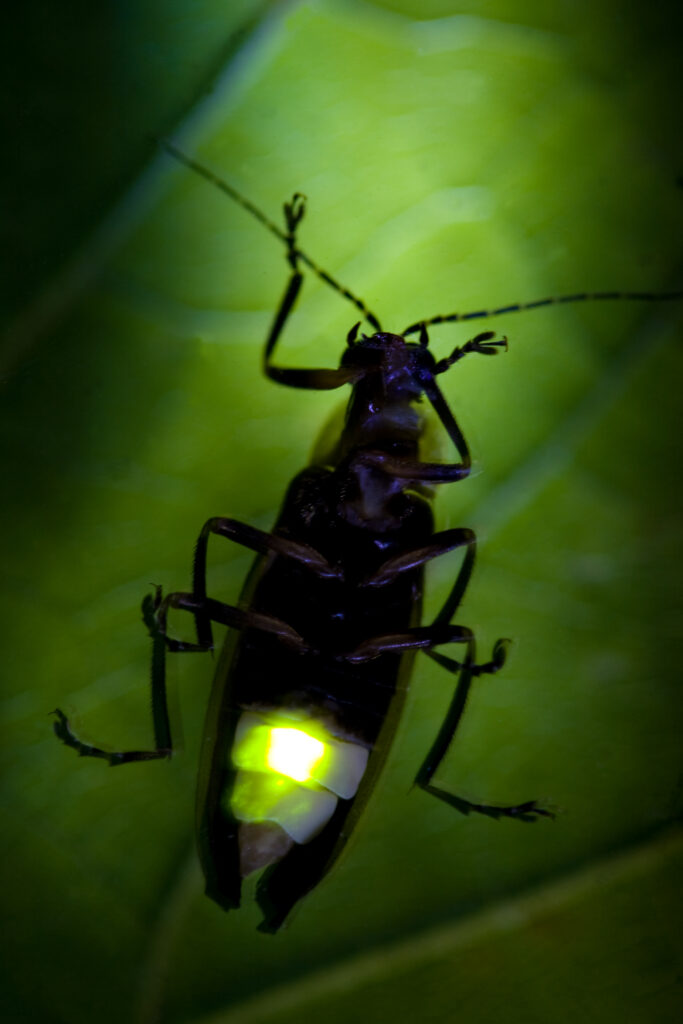
Dusk Firefly Nature Study Challenge
For a month or so in late May and early June, depending on where you live, you may be able to view glowing, adult fireflies at dusk. Dusk is the time when the sun is just beginning to go down for the night up to the time that it’s fully dark. During the daytime hours, adult fireflies spend their time hiding in tall grasses or under the leaves of bushes. But at dusk, they come out to glow their amazing bioluminescent lights to attract mates for making new baby fireflies.
If you have the opportunity to see fireflies at dusk, use the glass jar to catch one. As one flies low, simply scoop it into the jar and hold your hand over the top to keep it in the jar for a minute or two. Observe their boluminescence (or glowing) in action and then sketch what you see in your nature journal.
Be nice and gentle with the firefly and let it go once you’re finished observing.
Join me next week as we learn about life under a rock. Until then, happy nature exploring!
Online Nature Study Classes
Your entire family can enjoy nature study classes with Mrs. Cindy via live or recorded videos. The 45-60 minute classes will give your children something fun and valuable to do as science curriculum or on days when momma needs a moment. Join us!
Resources
Please leave a rating or a review on your podcast app! It helps the podcast to show up for more people…which means more families can enjoy science through the wonderful lens of nature study! Thank you!
Would you like to record a voicemail to answer this season’s nature study question?
At the end of each No Sweat Nature Study Podcast episode, Mrs. Cindy includes messages from a few of her friends. You have the opportunity to record a message that she might use on an upcoming episode!
All children must have their parents’ permission before leaving a recording. Parents are welcome to record an answer, too!
Each season, there will be a different question to answer. You can see this season’s question below. Think about your answer first and then follow these simple directions:
- Click the button that says “start recording”.
- Tell me your first name. (If you want to tell your age and/or where you live, feel free to do that, too.)
- You will have 60 seconds to answer the question, but try to be concise.
- Push the play button to listen to your recording before sending it to be sure it is recorded properly. If not, simply record it again.


